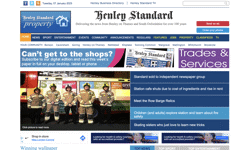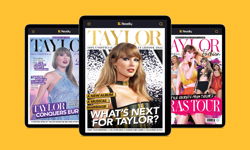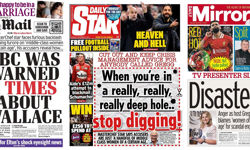With more options, better quality and greater capabilities, even the tried and true banner has evolved into a wildly different brand building beast.
Beautiful, beautiful display ads
The growth of brand spend online - up from 5% to 12% last year (IAB 2010) - is evidence that changes are afoot in the world of online advertising. Having established itself and grown on the back of its reputation for accountability and excellence for direct response, advertisers are now waking up to online advertising’s ability to build brand too.
Online advertising is the most accountable form of advertising in existence. However its accountability encouraged advertisers to concentrate on clicks as a success measure. In reality, online advertising is accountable and can be based on direct response, but it’s so much more than that. It blends interactions with the brand building effectiveness of TV, outdoor and print to deliver a unique form of advertising able to match every type of business objective.
An industry-wide re-evaluation of online advertising’s role has resulted in five key trends:
1. Brand building revolution
Smart advertisers now realise that you don’t always need a click to deliver a message. Like TV, print, radio, outdoor and cinema, some of the best online ads are those that simply deliver a message. For instance, the likes of Cadbury or L’Oréal should be happy telling their consumers that a product is available using online ads without a click. Instead looking to traditional metrics like ‘propensity to purchase’, ‘brand favourability’ and, of course, sales as a measure of success. Rather than judging on clickthrough, many brands are now judging on these metrics and it’s having a direct affect on the type of creative used.
2. Larger ad sizes
As screen resolutions have grown, online ads have to date remained the same size, growing proportionately smaller to the content. With greater screen estate and larger images used in content online generally, it makes sense for online ads to grow too. Indeed, they have been. If you don’t already do this regularly, have a quick scan across some of the UK’s most popular sites like AOL, the Daily Mail, the Guardian, MSN, Yahoo! and YouTube (you may even work for one!). Immediately, you will be struck by a range of large ads. Common large formats include the ‘mega banner’ that sits across the full width of a site; the ‘homepage takeover’ that fills the empty space around the outside of a site; and the most recent IAB UK standard, the ‘half page ad’ the size of two MPUs stacked on top of one another. In line with advertisers’ growing demand for brand building online ads, these larger sizes make sense because they allow for clearer imagery and more impact. While you’d expect them to feel more intrusive, in most cases their dimensions feel natural – and even look stunningly beautiful - on today’s rich media web.
3. Dynamic creative
John Lewis is just one brand that has begun using more and more dynamic content in its online ads, allowing it to change what is shown in the ad on the fly. New advertising technologies from companies like Criteo make it easier for advertisers to make literally hundreds, even thousands of variations of the same ad to be better tailored to the user. It does this easily by drawing in information like products or pricing from a brand’s website or database within the ad itself. In combination with contextual or behavioural targeting, it’s entirely possible to make bespoke ads for hundreds of thousands of people while creating only one or two pieces of creative.
4. Beautiful creative
Faster broadband speeds, more powerful computers and improved expertise paves the way for visually stunning, even beautifully created online ads. An advert lives or dies by the creative execution and, in the past, online ads have been criticised for their limitations. In 2011, online ads are by far the most limitless ad type on the planet! Higher resolution images, video, games, animation – you name it and you’ll be able to see it in an online ad somewhere. The IPA and Thinkbox, in conjunction with the Gunn Report, recently proved that great creative leads to more effective campaigns. As the barriers to creativity drop away and online ad creative improves with increased investment, so too will its performance.
5. Direct response evolution
Up until now, most people thought the best use of online ads was to drive clicks through to an advertiser’s site to read more, register a lead or make a purchase. The truth is, most advertisers can achieve their advertising objectives without taking the user away from the page they’re on. Buying online ads is like buying content space. With new technology, it’s completely possible to host the same functionality of a website within an ad, thereby allowing consumers to interact and engage in the ad without being taken elsewhere. Adverts by John Lewis, Vodafone and O2 are wonderful examples of this content within an ad. For instance, the O2 ad lets consumers order an O2 SIM card using a form in the ad.
Online video: the fastest growing medium ever
Since 2008, online video advertising has grown five-fold and is expected to reach a lofty £45 million for the full year 2010 (IAB PwC AdSpend Study 2010). Not bad considering this market didn’t exist four years ago. What’s more, this phenomenal growth isn’t expected to slow down; it’s expected to get faster!
Online video advertising – which includes all advertising in and around a video delivered through the internet – is like broadcast advertising on steroids. It brings with it all of the proven brand building power and then adds guaranteed exposure, accountability, targeting, interactivity and more.
Another unique attribute of this brand building powerhouse is the ability to reach people at work with video advertising. It’s the only medium that can do this. In fact, the IAB’s own research found that online video ads can be more effective at work than at home (IAB / Sky Online Video Format Effectiveness Study 2010).
Advertising in the palm of your hand
Mobile internet use has been growing exponentially since 2007/2008 (comScore). So much so that some predictions from the likes of Morgan & Stanley say that mobile internet use will overtake desktop by 2015. In reality this may happen sooner, leading to a flurry of publisher and advertiser activity in the mobile space.
In 2009, spending on mobile internet advertising grew by 32% (on a like for like basis) when compared with 2008 to reach £37.6 million for the year (IAB / PwC Mobile Ad Spend). Growth is expected to be explosive over the coming years as spend follows eye balls.
On mobile, most of the advertising mirrors online ads in one way or another, albeit customised for the smaller screen and different use. Search and display ads are by far the most common, but due to the very nature of a mobile phone, the implementation is very different. For example, ads that let you click to make a phone call, using a camera for augmented reality and GPS for local offers are some more common differentiators from online.
The HTML5 & CSS3 bomb
Without going into the techie details, the future of the web online and mobile is HTML5 and CSS3 – the language that creates every site. This latest version of the language is being written to allow for dynamic, interactive functionality (usually created in Flash), to run directly on the web page.
The IAB’s Display Council – a committee of lead publishers and agencies – held an emergency roundtable in 2010 to discuss what HTML5 meant to online advertising, a heavily Flash based business. The recommendation was to explore HTML5 ads now internally, but not to panic. Online ads won’t change immediately, but we will see test campaigns in 2011.
Publishers should now be extremely excited
All of these new forms of advertising should be ringing bells of excitement for people in the publishing industry. New products like video, mobile and tablet advertising attract interesting new audiences. After all, a decade ago, who would have thought that the Telegraph, the Guardian, the Times and other newspaper companies would become video broadcasters selling TV-like advertising?
Each of the new forms of advertising mentioned in this article are improvements on what has gone before, strengthening publishers’ offerings for advertisers. Not only that, but they’re premium opportunities by any standard; delivering premium results and commanding a premium price.
It’s the start for the era of brand advertising online with video, higher quality imagery and larger formats leading the way. Combined with the foundations of accountability, targeting and direct response, these new forms of advertising are formidable indeed.










